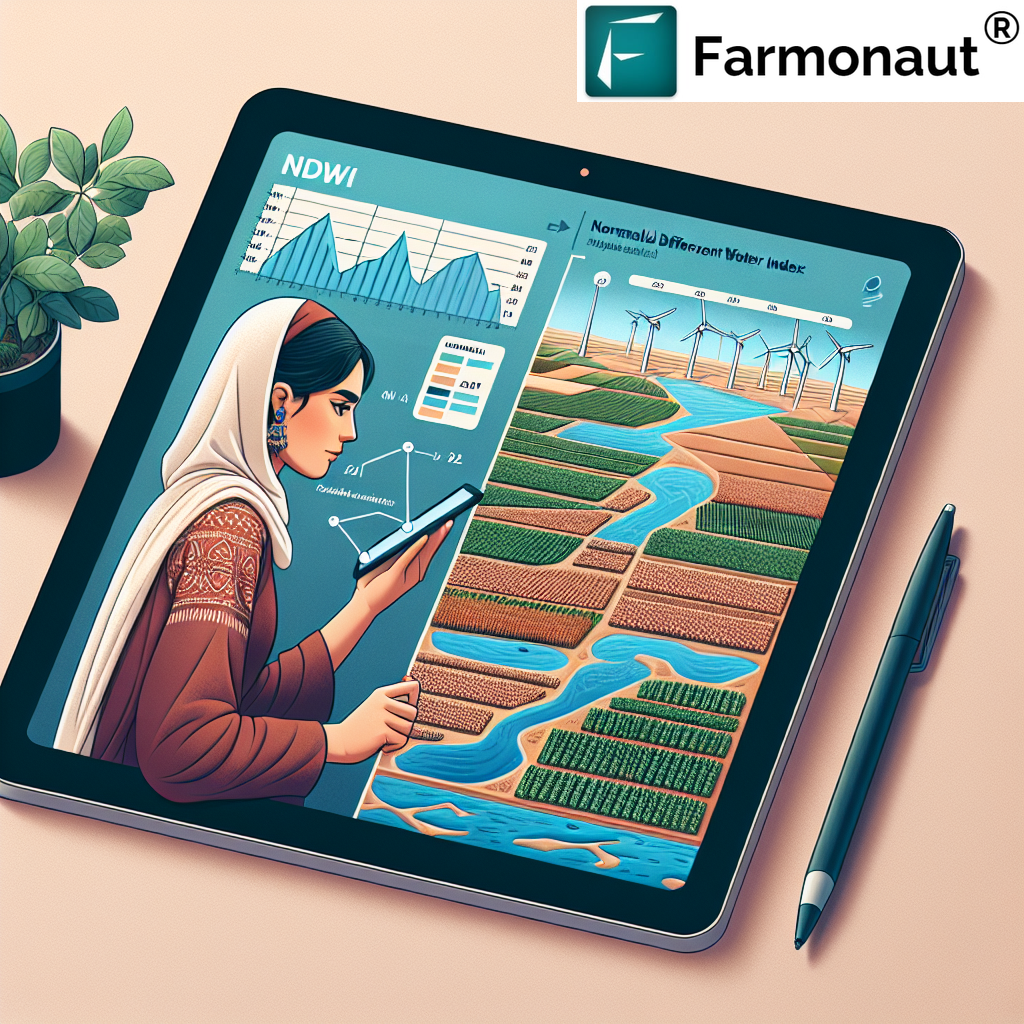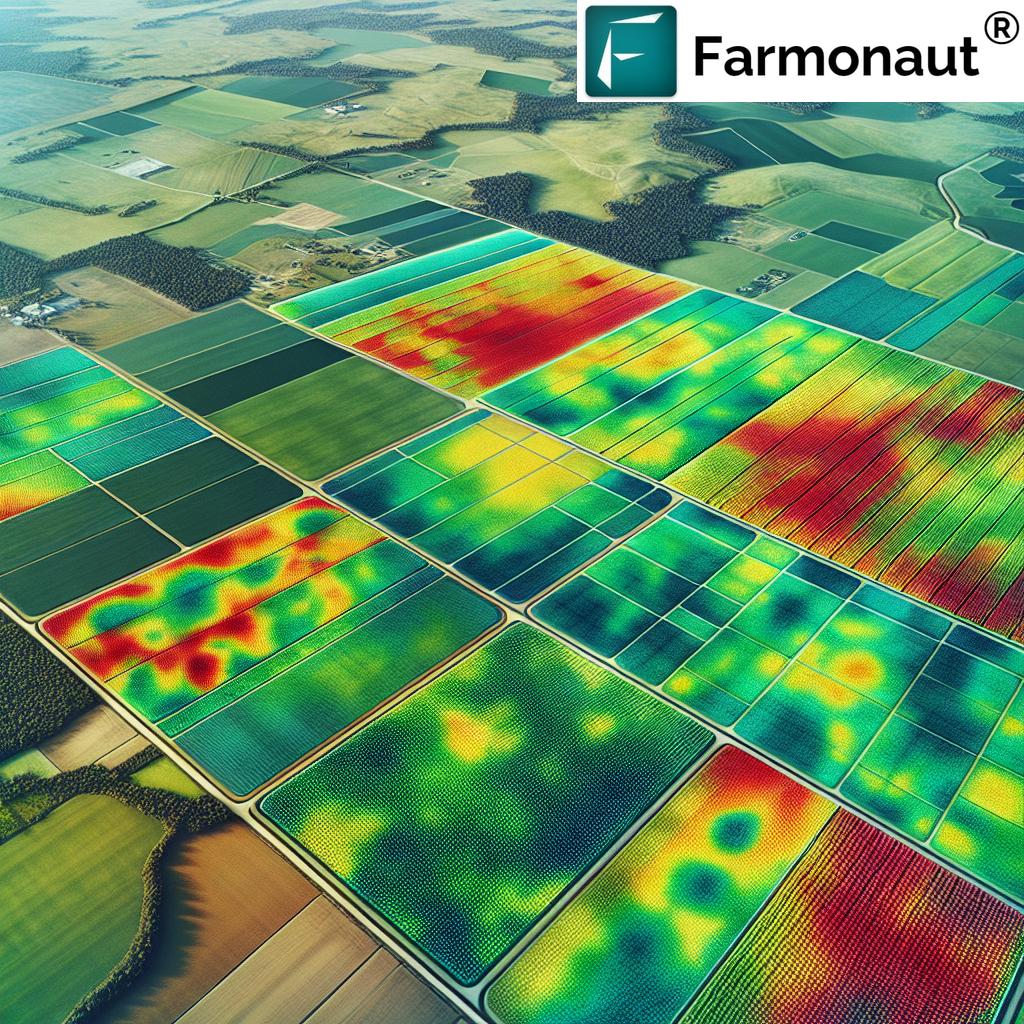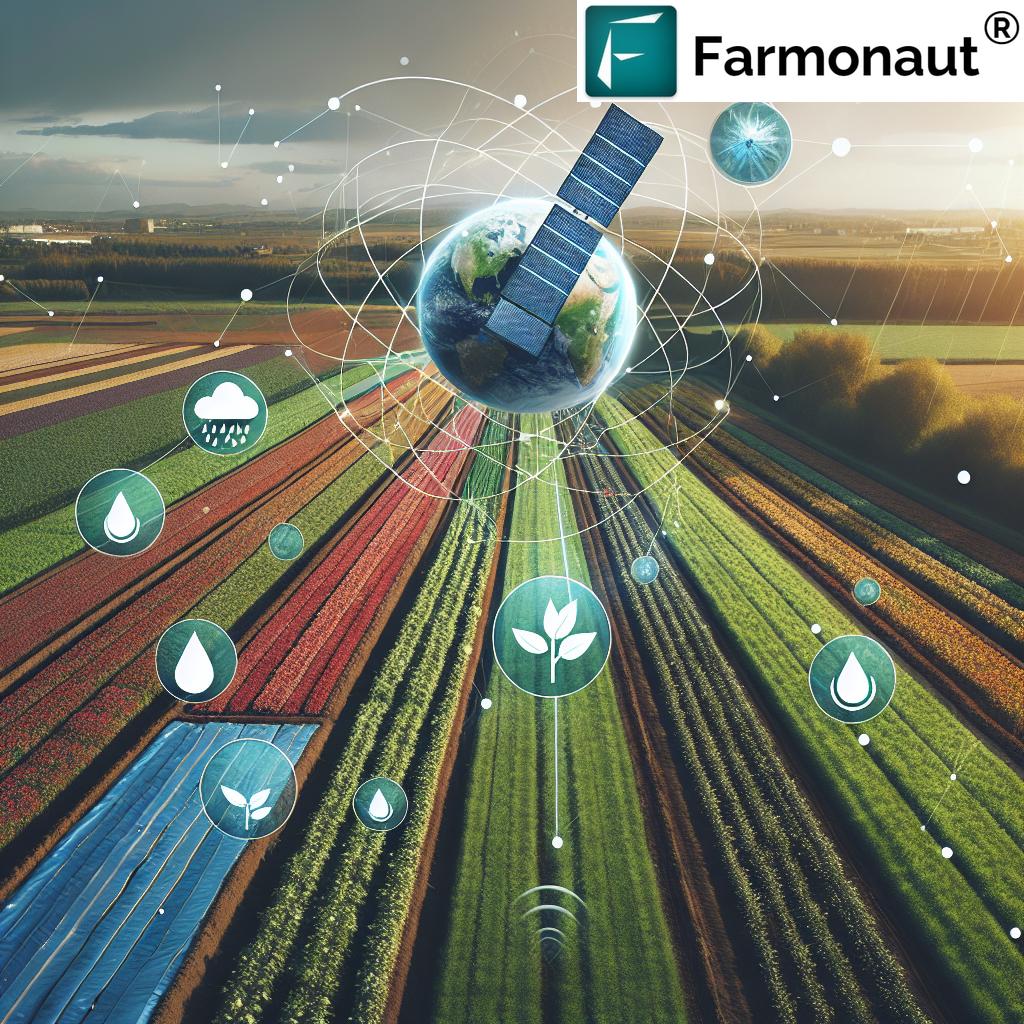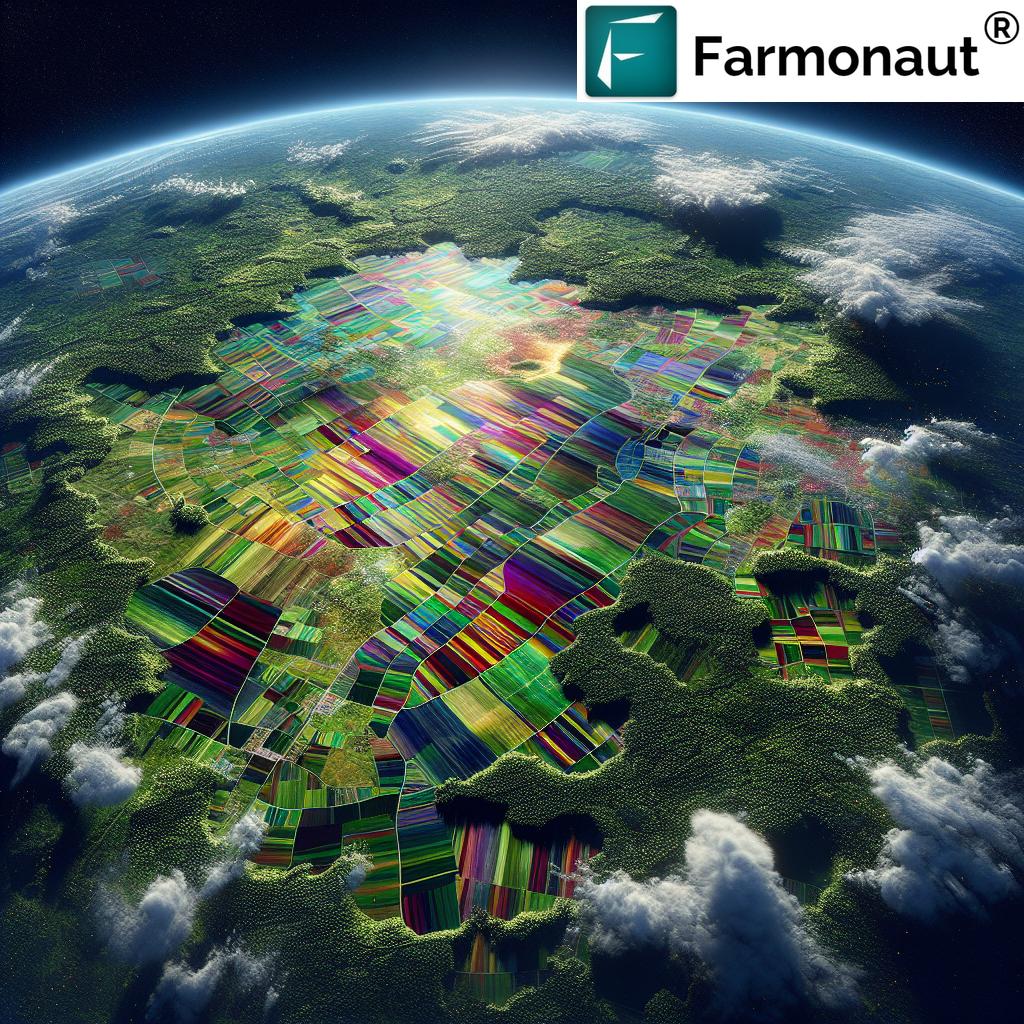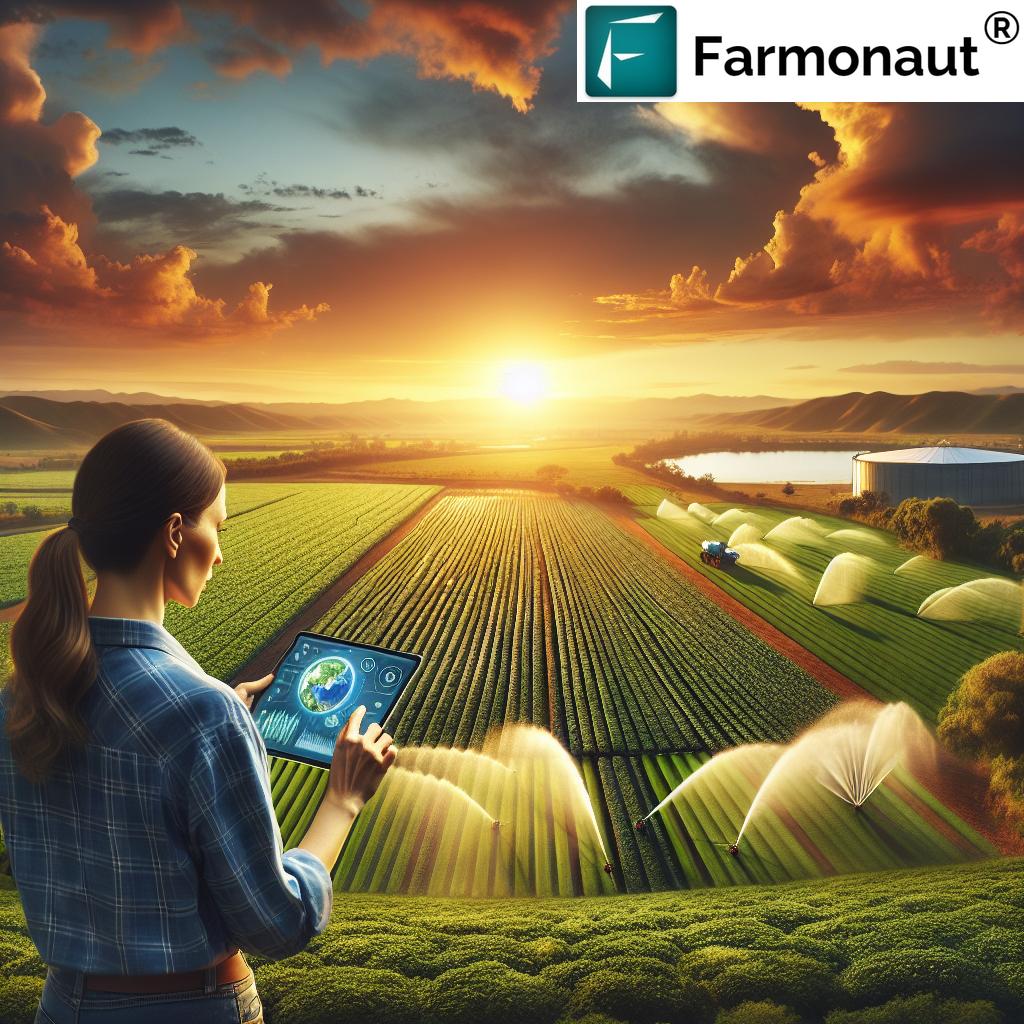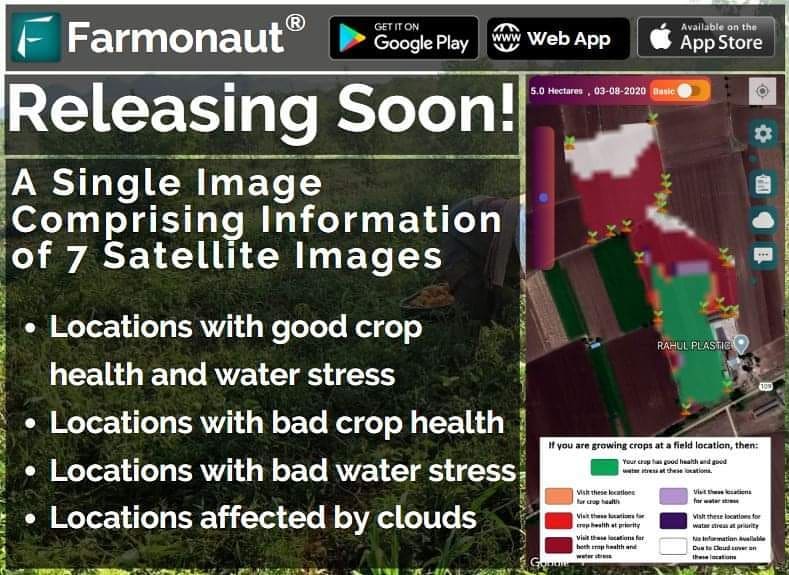Advanced Land Observing Satellite: Best IoT Agriculture Providers Transforming Farming in 2025
“Japan’s Advanced Land Observing Satellite covers over 70% of Earth’s land surface, enabling precise agricultural monitoring worldwide.”
Table of Contents
- Introduction: Revolutionizing Agriculture with Satellite & IoT Integration
- Why Advanced Land Observing Satellites & IoT are Game-Changers in 2025
- How Advanced Land Observing Satellites and IoT Work Together
- Top IoT Agriculture Providers Utilizing Advanced Land Observing Satellites
- Deep Dive: Best Satellite Providers for IoT Agriculture Applications
- Farmonaut: Powering Precision and Sustainability with Satellite-Driven Agriculture
- Comparative Table: Leading IoT Agriculture Providers & Satellite Technologies
- Benefits of Satellite and IoT Integration for Modern Farmers
- Real-World Examples: Satellite and IoT in Modern Agriculture
- The Future: 2025 and Beyond—Trends & Innovations
- FAQ: Advanced Land Observing Satellites & IoT in Agriculture
Introduction: Revolutionizing Agriculture with Satellite & IoT Integration
In the rapidly evolving landscape of modern agriculture, integrating advanced land observing satellites and the Internet of Things (IoT) is transforming how we monitor crops, optimize inputs, and drive sustainability. By 2025, the synergy between these technologies is set to redefine farm management, boosting productivity and promoting sustainable practices at scale.
This comprehensive guide explores advanced land observing satellite: best IoT agriculture providers, illustrating how the convergence of satellites and IoT delivers real-time data, precision management, and actionable insights for farmers and the entire agricultural sector.
Why Advanced Land Observing Satellites & IoT are Game-Changers in 2025
- Precision Management: Monitor field variability at a pixel level (3-5 meters) to inform precision farming and input use.
- Resource Optimization: Satellites and IoT sensors provide real-time data for accurate irrigation schedules, reducing cost and resource waste.
- Sustainable Practices: Track carbon footprint, input runoff, and environmental impact—pivoting towards sustainability.
- Early Detection: Catch crop health issues, pest outbreaks, and nutrient deficiencies before they cause significant losses.
With real-time, comprehensive imagery and on-ground IoT measurements, farmers can make decisions with confidence—insight driven, cost-effective, and sustainable.
How Advanced Land Observing Satellites and IoT Work Together
The Fundamentals: Advanced Land Observing Satellites in Agriculture
Advanced land observing satellites, equipped with sophisticated multispectral and hyperspectral sensors, capture high-resolution imagery across the electromagnetic spectrum. Unlike earlier remote sensing platforms, the latest satellites—such as ESA’s Sentinel-2, NASA’s Landsat 9, Planet Labs, Maxar, and AIRBUS—offer enhanced frequency revisit times (even multiple times per day), enabling continuous monitoring of vast agricultural landscapes.
These satellites deliver comprehensive data on:
- Soil moisture levels and variability
- Crop growth stages and vegetation health (NDVI, EVI)
- Pest infestations and disease outbreaks
- Nutrient deficiencies and stress signals
Spatial resolutions as fine as 3 to 5 meters per pixel are now standard, which is sufficient to discern intra-field variability—the fundamental enabler for precision farming techniques.
IoT Solutions: Connecting the Data Points On the Ground
While satellite imagery offers macro-level intelligence, IoT sensors—such as soil probes, weather stations, and irrigation controllers—capture localized, real-time measurements. These devices are installed across fields and continually upload data on:
- Soil nutrient and moisture status
- Micro-climate & weather patterns
- Crop temperature and growth anomalies
- Automated machinery status and input logistics
This data is then paired with satellite observations to:
- Validate and calibrate remote observations
- Optimize resource allocation (fertilizer, water)
- Automate irrigation and input application based on actual crop need
- Respond rapidly to disease or pest outbreaks
The result is a real-time, closed-loop precision agriculture management system.
“IoT-integrated satellites can transmit up to 1,000,000 real-time crop data points daily for advanced farm management.”
Top IoT Agriculture Providers Utilizing Advanced Land Observing Satellites
In 2025 and beyond, leading IoT agriculture providers leverage advanced land observing satellites to offer unparalleled real-time crop insights and precision management tools. Here are the major players revolutionizing modern agriculture:
- Farmonaut: Delivering affordable, AI-powered, and blockchain-enabled satellite monitoring via web, mobile app, and API for farmers, businesses, and governments worldwide. Explore Farmonaut’s Carbon Footprinting for sustainable agriculture and regulatory compliance.
- Planet Labs: Pioneering daily high-resolution imagery with its Dove constellation, giving global farmers up-to-date field health data.
- Maxar Technologies: Offering ultra-fine (up to 30cm) imagery for field-level crop events with innovative optical satellite platforms.
- Airbus Defence and Space: Leveraging the Sentinel series and commercial satellites for extensive coverage and multispectral farming intelligence.
- ICEYE: Leading in Synthetic Aperture Radar—delivering guaranteed imaging, regardless of cloud or weather, for uninterrupted crop monitoring.
Further, robust IoT-based systems—with support for probes, weather stations, and connected machinery—complement these satellite services, ensuring comprehensive management and cost savings for agricultural operators.
Deep Dive: Best Satellite Providers for IoT Agriculture Applications
1. Planet Labs
Planet Labs stands out for its ultra-high revisit frequency. With the Dove satellite network, fields can be scanned near real-time (daily revisit), providing timely crop monitoring and enabling farmers to detect growth stages, pest infestations, and moisture levels as soon as they arise. Typical applications include seasonal mapping, yield forecasting, and health monitoring for large agribusinesses and policy agencies.
2. Maxar Technologies
Through satellites like WorldView-3 and WorldView-4, Maxar delivers very high-resolution (up to 30cm per pixel) optical and multispectral imagery. This sharp clarity allows for accurate field boundaries, soil classification, and even intra-field crop stress signals—perfect for digital twin models and AI-powered crop anomaly detection.
3. Airbus Defence and Space
The Sentinel constellation managed by Airbus and the European Space Agency (ESA) provides multispectral data critical to large-scale, regional, or national agricultural monitoring programs. Open-access data (e.g., Sentinel-2, with 10m per pixel resolution) is favored for continuous land cover changes, seasonal trends, and long-range planning—making it invaluable for sustainable agriculture and research.
4. ICEYE
Unique among the best satellite providers iot agriculture, ICEYE delivers radar-based imagery that is immune to cloud cover and lighting. This guarantees uninterrupted observation for regions facing persistent storms, monsoons, or night monitoring needs. Applications include flood management, soil moisture assessment, and urgent disaster response.
5. Farmonaut
We at Farmonaut harness the collective power of advanced land observing satellites, artificial intelligence, and blockchain technology to offer an integrated platform for real-time, actionable farm management. Read about Farmonaut’s Blockchain Traceability for trusted supply chains.
- Crop, soil, and infrastructure monitoring with high-frequency multispectral imagery
- Fleet and Resource Management—reduce logistics cost, improve machine utilization
- Satellite-verified crop insurance and loan risk scores
- Large Scale Farm Management Tools—for agricultural enterprises and administrators
- Environmental compliance and emission tracking for sustainable agricultural practices
- All accessible via web, Android, iOS, and seamless API integrations. Review our developer API documentation here.
Farmonaut: Powering Precision and Sustainability with Satellite-Driven Agriculture
At Farmonaut, our mission is to democratize satellite-driven insights for a range of users—from individual farmers in India to large agribusinesses in Europe and government agencies worldwide.
- Real-Time Crop Health and Yield Monitoring: Our platform provides detailed NDVI, EVI, and soil moisture indices—backed by satellite imagery and AI-processed models—for every square meter of your field.
- Automated Alerts: Instant alerts for water stress, pest infestations, or disease outbreaks help users intervene before yield loss occurs, reducing cost and risk.
- Jeevn AI Advisory: This state-of-the-art tool analyzes satellite and IoT data to deliver practical, timely advice directly to your device—whether for input schedules, predicted weather, or custom strategies.
- Blockchain Traceability: Ensure product authenticity and compliance at every supply chain step. Our blockchain feature builds trust between farms, markets, and consumers.
Whether managing a smallholder plot or overseeing thousands of hectares, our offerings are scalable, affordable, and built for 2025’s technology-driven agriculture.
Comparative Table: Leading IoT Agriculture Providers & Satellite Technologies
| Provider Name | Satellite Integration | Real-Time Data Access (Estimated Latency) | Crop Monitoring Features (Coverage Area in ha) | Precision Management Tools | Estimated Cost (per acre/month) | Sustainability Impact |
|---|---|---|---|---|---|---|
| Farmonaut | Yes (multispectral, thermal, AI) | ~1 hour | 10 – 100,000+ | AI advisory, fleet, blockchain traceability, automated alerts | Low (affordable and scalable subscription) | ★★★★★ (Real-time carbon tracking, water conservation) |
| Planet Labs | Yes (high-frequency optical) | ~6 hours | 100 – 1,000,000+ | Automated change detection, alerts | Medium | ★★★★☆ (Frequent, global monitoring) |
| Maxar | Yes (ultra-high-res optical) | ~1-3 days | 20 – 500,000+ | Precision zone management | High | ★★★☆☆ |
| Airbus | Yes (Sentinel, multispectral) | ~1-2 days | 1,000 – 1,000,000+ | Land use planning, yield forecasting | Low (open access; commercial tier varies) | ★★★★☆ |
| ICEYE | Yes (Radar/SAR, all-weather) | ~4-8 hours | 100 – 500,000 | Flood, disaster, water/soil monitoring | Medium | ★★★★★ (Guaranteed monitoring) |
Benefits of Satellite and IoT Integration for Modern Farmers
- Boosted Productivity: Pinpoint exactly where and when crops need support, reducing waste of water, fertilizer, and other resources.
- Risk Reduction: Early detection of pest outbreaks, disease spread, and weather anomalies enables proactive responses.
- Cost Savings: Precision input application and optimized irrigation schedules reduce labor and input costs.
- Environmental Stewardship: Accurately track and reduce environmental impact through direct measurement of water use and emissions. Learn how Farmonaut’s carbon footprinting solutions support regulatory compliance.
- Informed Decisions: Real-time actionable data empowers farmers and managers to make evidence-based decisions on a daily, weekly, or seasonal basis.
The integration of advanced land observing satellites, best satellite providers iot agriculture, IoT sensors, and AI-driven analytics is transforming agriculture into a truly technology-driven sector, poised for resilience against both climate and market shocks in the years ahead.
Real-World Examples: Satellite and IoT in Modern Agriculture
- Satellite-Driven Irrigation: IoT-enabled smart irrigation systems consult satellite moisture data and IoT soil probes, activating only where and when water stress is detected—substantially conserving water and improving turmeric yields in fields of Andhra Pradesh, India.
- Rapid Disease Outbreak Alerts: Automated alerts powered by real-time NDVI drops in multispectral satellite imagery (from providers like Planet Labs) combined with field weather sensors help sugarcane farmers in Brazil intervene early and save crops.
- Precision Fertilizer Application: Farmonaut’s AI advisory models use satellite and IoT nutrient sensors to map zones of deficiency, allowing targeted input application. This enhances yield and prevents over-fertilization that harms soil biology.
- Large Scale Resource Management: Farmonaut’s fleet management tools harness satellite and IoT data, optimizing the deployment and logistics of sowers, harvesters, and vehicles across thousands of hectares—lowering operational costs.
- Compliance and Traceability: With blockchain-based traceability by Farmonaut, each product movement—from farm to export warehouse—can be tracked and verified with timestamped satellite images, increasing market value and consumer trust.
The Future: 2025 and Beyond—Trends & Innovations in Satellite-IoT Agriculture
As technology advances, here’s where the satellite-IoT agriculture landscape is heading:
- Hyperlocal AI-Driven Models: Farmonaut and other leaders are refining predictive models using data from millions of IoT sensors and satellites, enabling 12-24 hour yield or outbreak forecasting at the field level.
- Ubiquitous Connected Devices: By 2025, it is expected there will be hundreds of millions of IoT devices in fields worldwide—sharing localized, high-resolution data to cloud-based dashboard, app, and API services.
- Integration with Automated Machinery: Tractors, drones, and harvesters increasingly run on live satellite and IoT inputs, auto-adjusting for soil variability, weed pressure, or changing weather.
- Universal Traceability: Blockchain and satellites combine to establish global trust and accountability—whether for crop-sourcing, carbon offsets, or compliance in export markets.
- Open-Data and Interoperability: More providers and governments are sharing agricultural satellite data, increasing accessibility and lowering technology adoption barriers for even the smallest farmers.
We at Farmonaut are committed to keeping advanced land observing satellite, IoT agriculture, and AI tools accessible, affordable, and future-ready—building resilience and prosperity for an evolving world.
Explore our Crop Plantation & Forest Advisory for real-time plantation support and tailored recommendations on emerging field issues.
FAQ: Advanced Land Observing Satellites & Best IoT Agriculture Providers (2025)
1. What is an advanced land observing satellite, and why is it important for agriculture?
An advanced land observing satellite is a state-of-the-art spacecraft equipped with multi/hyperspectral sensors to capture high-resolution imagery over agricultural landscapes. These satellites monitor soil health, crop growth, moisture, pest attacks, and more—providing real-time, actionable data for precision farm management.
2. How does IoT enhance satellite data for farming?
The IoT (Internet of Things) uses field-deployed sensors—like soil probes and weather stations—to record hyper-local, on-the-ground data. By integrating this with satellite data, farmers get a complete, validated picture of field conditions for smarter crop decisions.
3. Who are the best satellite providers for IoT agriculture in 2025?
The top satellite providers include Farmonaut, Planet Labs, Maxar, Airbus, and ICEYE. Each offers unique strengths—from daily imaging (Planet), to all-weather radar (ICEYE), to affordable, AI-integrated solutions (Farmonaut).
4. What are the main benefits of satellite and IoT integration for farmers?
Main benefits include:
- Real-time monitoring of crops, soil, and weather
- Early detection of pest outbreaks, disease, and water stress
- Reduced input waste and costs
- Enhanced sustainability and compliance
- Smarter, data-driven decision-making
5. How can I access satellite-based agri monitoring for my farm?
You can access these services via mobile/web apps, such as Farmonaut’s platform, or connect through APIs for integration into your enterprise system. Farmonaut offers tailored subscriptions for all scales and types of farms.
6. Can small and medium farmers afford advanced satellite and IoT tools?
Yes. Farmonaut and several other providers make satellite-driven agricultural insights affordable with scalable, pay-per-use models. You don’t need expensive hardware—just a smartphone or web access.
Conclusion: Embracing Advanced Land Observing Satellites & IoT for a Resilient Agricultural Future
In a world facing climate pressures and rising food demand, advanced land observing satellites and IoT integration revolutionize agricultural practices. By 2025, real-time data, predictive analytics, and precision management—enabled by leading IoT agriculture providers—will set new standards in productivity and sustainability.
We at Farmonaut will continue to empower farmers, businesses, and governments with scalable, advanced, and accessible satellite-based solutions. Harnessing the latest technology ensures every field and farmer can thrive—today and in the future.




